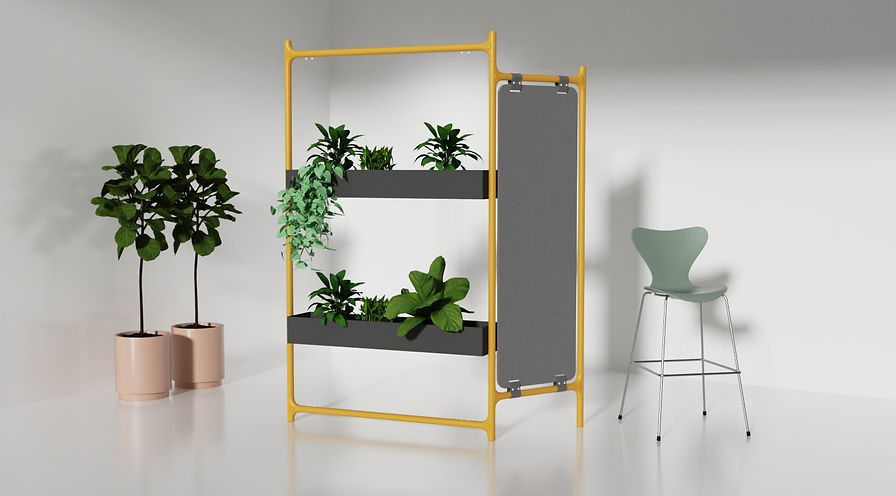top of page

Evolution of a Versatile Display Solution
Building upon a foundational frame-and-panel system introduced in 2008, the 2022 iteration of the Folding Scissor Frame system, known as "Scissy," underwent significant design enhancements. The primary objective was to reduce production costs while elevating both form and functionality. This was achieved by replacing costly machined aluminum components with injection-molded connectors, streamlining the manufacturing process without compromising on aesthetic appeal.


Design Flexibility and Material Innovation
The updated system features modular components that can be easily assembled into various configurations, including room dividers, display units, and shelving systems. The use of injection-molded knuckles allows for pivoting connections, enabling users to create dynamic zig-zag structures that adapt to different spatial requirements. The introduction of new color options and the incorporation of warmer materials, such as wood veneer panels and vegan leather straps, provide a contemporary and inviting aesthetic suitable for both residential and commercial environments.



Applications in Residential and Commercial Settings
The versatility of the Folding Scissor Frame system is demonstrated through its application in various settings. In residential spaces, it serves as an elegant room divider, offering both privacy and style. In commercial contexts, the system functions as an effective display solution for retail and museum environments, showcasing products or exhibits in a structured yet flexible manner. The ability to customize the configuration and materials ensures that the system meets the specific needs of each application.

Integration with Broader Design Systems
Beyond standalone applications, the Folding Scissor Frame system integrates seamlessly with other design elements to create cohesive environments. For instance, the same tubular framework and connectors are utilized as leg supports in a cabinet collection, promoting design continuity across different furniture pieces. This integration not only enhances the aesthetic harmony of a space but also allows for cost amortization through the reuse of components.




1/4
bottom of page